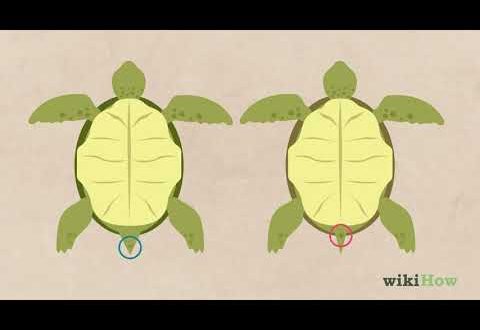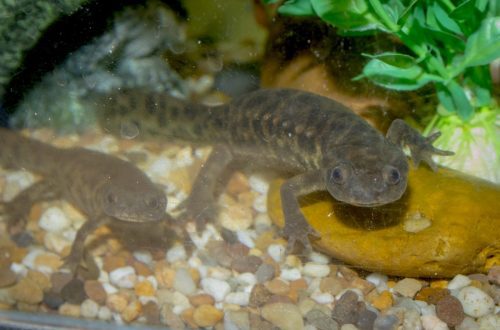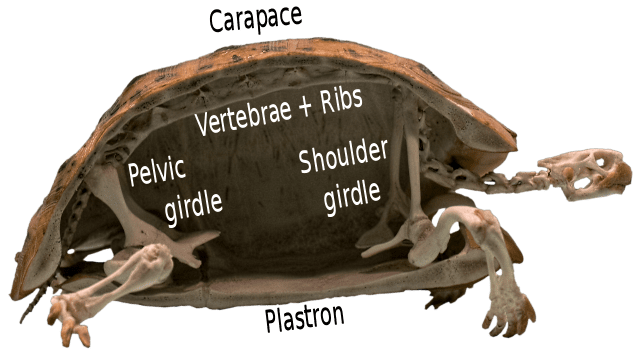
Estrikti nan kilè eskèlèt la tòti, karakteristik nan kolòn vètebral la ak zo bwa tèt
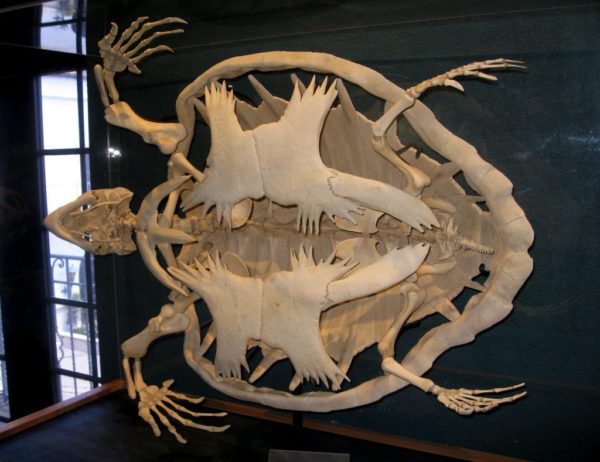
One of the most ancient inhabitants of the planet, turtles are representatives of the Chordata class, which have a fully developed spine. The skeleton has an unusual structure: in addition to the main bones, there is a shell connected to the internal skeletal system. The shell is not an outer shell, but a hard protective shell that cannot be separated from the body. During the formation of the skeleton, the shoulder blades and ribs “grow into the shell.” All in all, the tortoise skeleton is a unique design worth considering in more detail.
contents
Skeleton structure
The entire skeleton of a turtle is conditionally divided into 3 fragments:
- the skull, which is formed by the cranium, jaws and hyoid apparatus;
- axial skeleton, consisting of a shell, vertebrae and costal bones;
- appendicular skeleton, including limbs, bones of the chest and pelvis.
The reptile is slow because it feeds on grass (most species) that can be easily obtained. And there is no need to run away from predators: a hard shell is a reliable defense against enemies. The turtle is able to move quickly, but the skeleton is heavy for active movement.
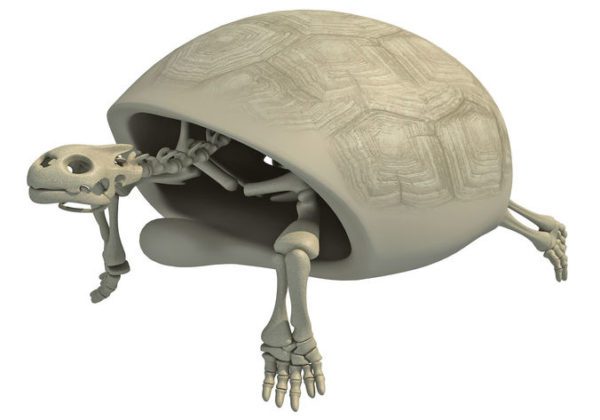
Is the turtle a vertebrate or an invertebrate?
The fact that the turtle is a vertebrate animal can be seen by examining the structure of the spine. Its departments are similar to those of mammals: these are cervical, thoracic, lumbar, sacral and caudal.
The turtle has 8 cervical vertebrae, of which the 2 front ones are movably connected, which allows the animal to quite actively move its head and put it under the shell. The department that forms the body (thoracic and lumbar) is connected to the upper part of the shell – the carapace.
The thoracic region begins with elongated vertebrae that are connected to the sternum, forming the ribcage of the turtle.
The sacral vertebrae form lateral processes connected to the pelvic bones. The tail consists of 33 vertebrae, they are characterized by extraordinary mobility. Males have a longer tail than females, in the cloaca of which the oviduct is located. The skeleton of males is also smaller: males are “smaller” than females.
This is interesting: It is impossible to pull the animal out of the “house”. The shell is completely fused with the skeleton. It contains the spine and part of the chest with modified ribs. The exception is leatherback turtles, in which the shell is separated from the spine and is formed by small bone plates.
Head skeleton
The turtle’s skull is completely ossified. It contains many bones that form a fixed joint. It is formed by 2 departments: visceral and cerebral. The visceral part is mobile and consists of the jaws and the sublingual apparatus.
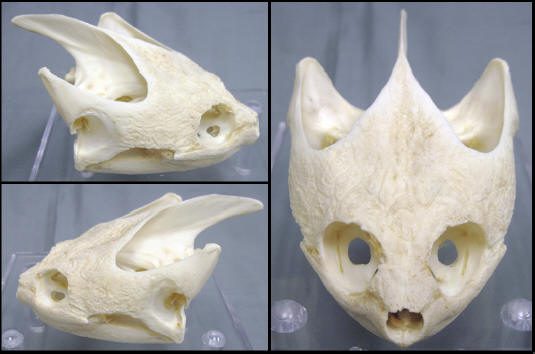
Instead of teeth, the reptile has sharp horny plates on the jaws, turning into a beak. The jaws are movably articulated and have powerful musculature, due to which the force of compression of the jaws is enhanced.
The structure of the limbs
If we consider the structure of the shoulder and pelvic girdle using the example of the skeleton of a marsh turtle, then their unusual structure is clearly visible:
- the shoulder girdle is built from 3 elongated, radius bones;
- the scapula, located vertically, is attached to the carapace with the help of the thoracic vertebra;
- pelvic girdle, consisting of 3 large bones associated with the spine and carapace;
- the vertically located iliac bones pass into the ischial and pubic, which have a horizontal arrangement.
The structural features of the limbs are that the bones of the hips and shoulders are shorter, there are fewer bones of the wrist, metatarsus, tarsus and phalanges of the fingers. This structure is more typical for land reptiles that rely on fingers.
In marine life, the bones of the fingers are elongated; they form flippers necessary for an aquatic lifestyle. Females use their flippers to come ashore and dig holes in which to lay their eggs.
This is interesting: The armored skeleton is designed so that one of the movable joints helps to completely “hide” all parts of the body inside when danger approaches.
Shell estrikti
The structure of the turtle skeleton has undergone significant changes due to the presence of a shell. This horn formation is important for the animal and plays the following role:
- saves from injury;
- protects from predators;
- maintains body temperature by retaining heat;
- connects the skeleton together, creating the main skeleton.
On the example of the skeleton of a marsh turtle, it can be seen that the shell is formed by bone plates that have grown together to form strong armor. Between the plates is cartilage. Due to this, the reptile can hold a weight of 200 times its own weight.
If you look at the skeleton of a turtle in section, then the shell is formed by a curved dorsal carapace and a flatter ventral plastron. The carapace is built from 38 horny scutes, and there are 16 of them in the plastron. Depending on the species and lifestyle, a different number of plates and the shape of the shell are formed.
The carapace is the “link” with the skeleton, it is to it that the processes of the vertebrae are attached, and a strongly arched spine passes under it. The turtle belongs to unique animals that have both an external and an internal skeleton.
This is interesting: The shell resembles a solid, impenetrable shield. But it is equipped with nerve endings and blood vessels, so when the “house” is injured, the turtle experiences pain.
How was the turtle skeleton formed?
It is assumed that the ancient ancestors of turtles lived in the Triassic of the Mesozoic era, that is, 220 million years ago. The shell was formed from the ribs, and a “dome” of plates gradually grew around.
One of the ancestors of modern species is Odontochelys semitestacea, which is an inhabitant of the aquatic environment and was found in southwest China. She had teeth in her jaws.
The formation of the shell was not completed: the carapace was formed by expanded ribs, and the plastron was already taking its modern form. An unusual animal was distinguished by a long tail section and more oblong eye sockets in the skull. Scientists believe that Odontochelys semitestacea used to live in the seas.
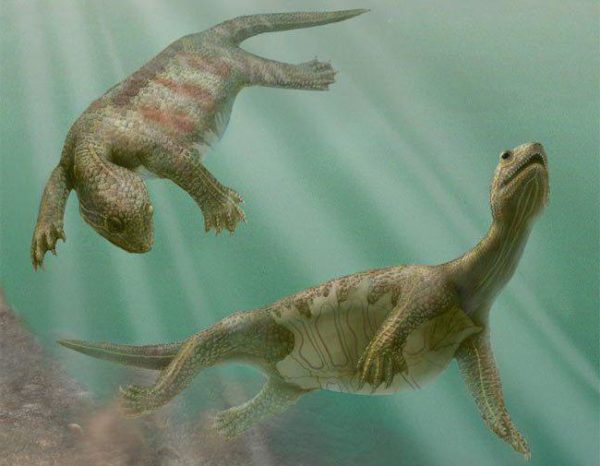
The tortoise is a unique chordate with a shell. It is thanks to him that the reptile has an unusual arrangement of bones and a somewhat “strange” skeleton. The powerful frame allows the turtle to adapt to life in the water and on land. And now the question: does a turtle have a spine is removed from the agenda.
turtle skeleton
3.3 (65.45%) 11 vote



